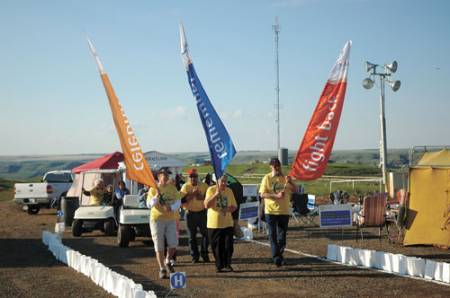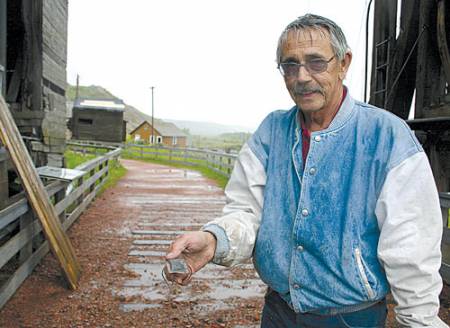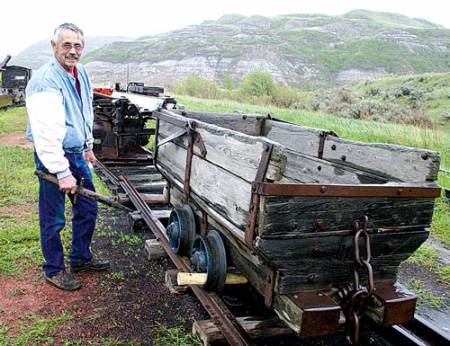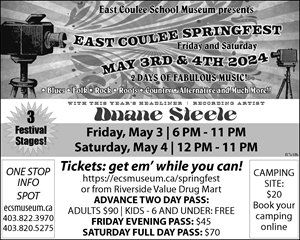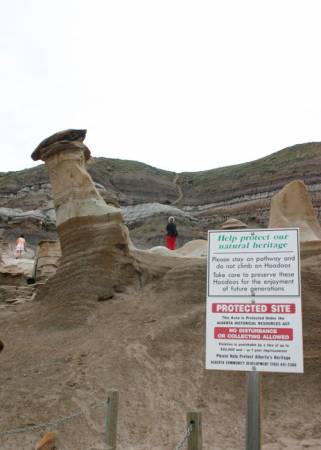
The Royal Tyrrell Museum will be going forward with erecting barriers around the Hoodoos, possibly being installed this fall.
The Mail reported in its August 12, 2009 edition, the museum was looking into putting barriers up to protect the popular destination for residents and tourists to enjoy for generations to come. Andrew Neuman confirmed the Hoodoo Preservation Project would be moving forward.
“We have received some funding to proceed on that project this year,” Neuman tells The Mail.
He explains they have completed the design and engineering phase and currently has a request for proposals on the Alberta Purchasing Connection website. There was a pre-bid meeting on the site on Tuesday, June 8.
“The next bit is to start on the fabrication and we expect the installation to take place at the end of the tourist season,” said Neuman.
He explains there are three objectives to the project. First and foremost is protecting the Hoodoos.
“There has been a fair amount of vandalism, graffiti and carvings that are speeding up the weathering out there,” said Neuman. “The first objective is to eliminate the close personal contact between people and the Hoodoos themselves, and we’ll do that by putting up an unobtrusive fence. These will identify the sensitive areas and tell people they shouldn’t go into that area, and why.”
Another objective he said, was to allow visitors a great experience by constructing stairways to ideal viewing venues.
“We have done a lot of research on where the best places for viewing and taking pictures are,” he said, adding they are even planning special camera ledges to place the camera for the perfect holiday snapshot.
With the new walkways and barriers, they hope to increase the safety of the site. For example, rain can make the site at best, messy, at worst, hazardous. He adds the improvements will make it more accessible to those with mobility issues, although because of the nature of the site, it will not be barrier free.
The improvements will also add a shades area and more interpretive signs for the site.
Currently, the Tyrrell has placed employees at the site to act as both guardians and interpreters. He hopes they will eventually move away from this.
“We’ll evaluate the success of the project and whether or not any kind of constant presence by people is needed,” said Neuman. “We are hoping it won’t be so the money we are investing in building these new strategies will reflect in our manpower budget.”

